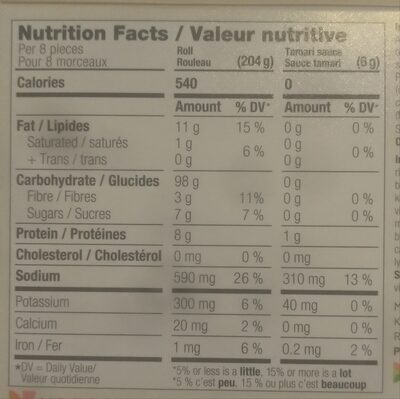Plant-Based California Roll with Avocado and Cucumber - Konscious - 210 g
This product page is not complete. You can help to complete it by editing it and adding more data from the photos we have, or by taking more photos using the app for Android or iPhone/iPad. Thank you!
×
Barcode: 0877168000001 (EAN / EAN-13) 877168000001 (UPC / UPC-A)
Quantity: 210 g
Brands: Konscious
Categories: Meals, Sushi and Maki, Sushis
Labels, certifications, awards:
No gluten, Vegetarian, No GMOs, Vegan, No Bisphenol-A, Non GMO project
Manufacturing or processing places: Canada
Stores: Urban Fare
Countries where sold: Canada
Matching with your preferences
Environment
Packaging
Transportation
Report a problem
Data sources
Product added on by binzyboi
Last edit of product page on by binzyboi.
Product page also edited by roboto-app.
If the data is incomplete or incorrect, you can complete or correct it by editing this page.








